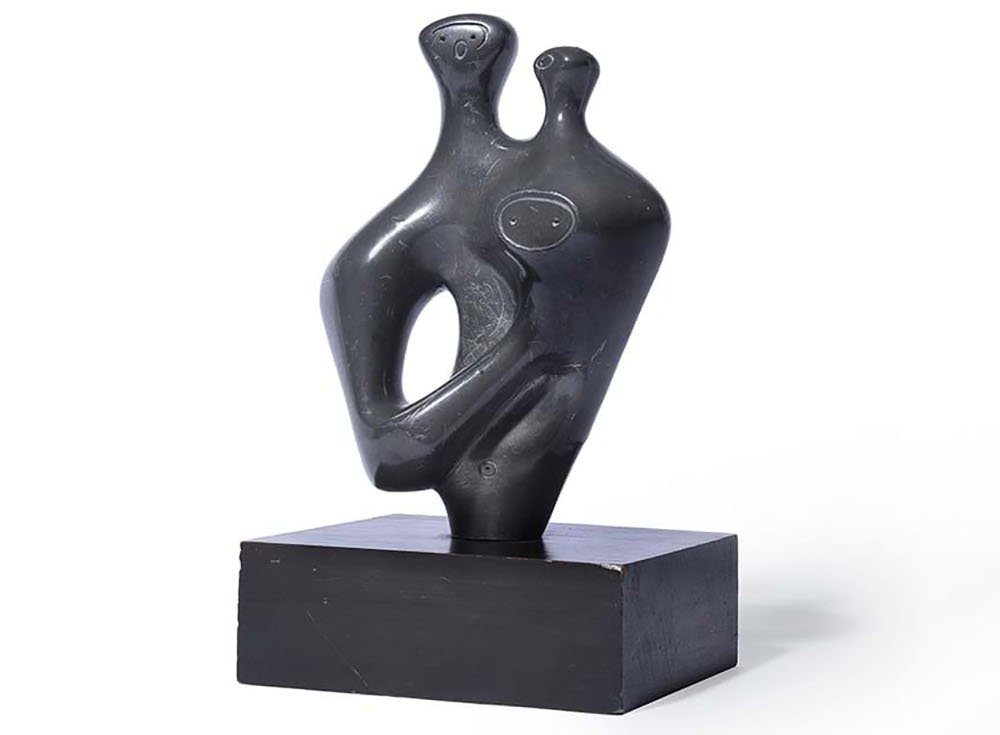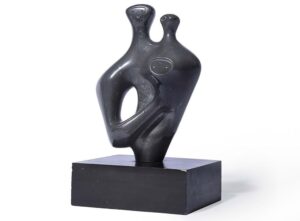
Rare Henry Moore Sculpture Spent Decades Sitting on Mantelpiece at English Farm

For decades, a small, unassuming lead statue sat on the mantel of a farmhouse in England. Now identified as a previously unknown sculpture by 20th-century British Modernist Henry Moore, the artwork will go under the hammer in March. It carries an estimate of roughly $40,000 to $68,000 but could fetch substantially more at auction, reports ITV News.
Experts at the Henry Moore Foundation and auction house Dreweatts authenticated the work, which dates to around 1939 or 1940 and is titled, Mother and Child. It features an abstract representation of the two figures; per BBC News, the foundation linked the statue to Eighteen Ideas for Sculpture, a 1939 Moore sketch in its archives.
Dreweatts specialist Francesca Whitham tells ITV News that the sculpture is “unique and rare,” partly because the artist only worked briefly with lead in the 1930s. Moore experimented with the substance, along with rope and wire, while creating his well-known stringed sculptures. Mother and Child may have been a preliminary design for a stringed piece.
“What is significant is that the Henry Moore Foundation was not aware of the sculpture, despite Moore keeping meticulous records,” Whitham tells Dalya Alberge of the London Times.
Born in 1898, Moore was a pioneer in post-war Modernism who was renowned for his abstract bronze sculptures. The artist rose to popularity in the 1950s and produced sculptures, drawings, prints, and textiles until his death in 1986.
The seven-inch-tall statue had long sat unnoticed on the fireplace mantel of John Hastings, a farmer in Wiltshire, about 90 miles west of London. After his death in 2019, family members asked an independent valuer to appraise Hastings’ few possessions. According to the Times, the appraiser listed the figure as a “lead maquette … in the manner of Henry Moore” an assessment that led the family to contact the foundation.
As a Dreweatts statement notes, Hastings’ father, Hubert de Cronin Hastings, was an editor at the Architectural Review for nearly 50 years. Moore, whose work was featured in the magazine during the 1930s, may have gifted the sculpture to the elder Hastings as a token of his appreciation, the Times reports. Alternatively, ITV News posits that Moore gave the piece to James Maude Richards, an assistant editor who, in turn, passed it on to Hubert.
“The family had always called the sculpture ‘The Henry Moore’ due to family myth and stories told by Hubert,” Whitham tells Taylor Dafoe of Artnet News.
She adds, “When it arrived on my desk and I heard the story I knew it was something interesting and definitely worth investigating.”
Speaking with the Times, Whitham says, “It would be interesting to think that Moore repaid his appreciation by gifting this sculpture to Hubert. … In 1974, it was [with] his son, a farmer, who didn’t even have locks on the doors. We have no record of an insurance valuation having been done.”
Hastings may not have realized the value of the sculpture. He placed it on the mantel alongside other family trinkets.
“John was a countryman and farmer who bred sheep and livestock,” a family spokesperson tells the Times. “He was more interested in his animals than fine art. He was not concerned or bothered who the sculpture was by. … It just became a sentimental family object.”
(smithsonianmag.com)


